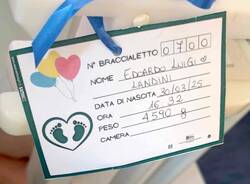Why is Rome called the Eternal City?
So often, we hear that “Rome is the eternal city”; but why? We ourselves instinctively call it this, maybe after hearing it so often. To discover the real meaning of this name, we have to go back in time

Rome is the capital of Italy. It is the capital of the region of Lazio, which is in the centre of Italy; it has almost three million inhabitants. This metropolis extends over an area of more than 1200 km2.
It is a city that is full of buildings that, in terms of town planning and architecture, are among the country’s most advanced, but at the same time, it has an ancient history; Rome began its life about three thousand years ago.
The capital is the heart of Italian culture and the cradle of its multimillennial tradition. We owe almost everything we have to the ancient Romans, those of the Republic and of the Empire, and to everything they left us in terms of materials, intellect and morals.
Rome, “The eternal city”, is our heritage; it is the clear symbol of that Latinity that Italians possibly buried long ago, in the ruins of too many dominations and secessions over the ages.
So much has passed under the bridge that we have forgotten why we call Rome the “Eternal city”. Almost no one knows why, and the few who do, keep it to themselves. So, we investigated, to discover why. We could guess of course, throw out a thousand or more hypotheses, but there is no guarantee we would be right.
Of course, we know there are other cities that have been called eternal over the decades: two such examples are Jerusalem and the famous and picturesque Kyoto, in Japan.
But the big difference with Rome is that, over time, those places have lost all reason to be called an eternal city, but the Capital of Italy still has it today. Now, let’s take a look at the origin of this name, and especially at what makes Rome unique.
The eternal city: the origin of this term
Rome not only has a very large population, it is also one of the cities where national and international tourism converges; it captures your attention, it fascinates foreigners and has a halo of intriguing mystery. Every one of its streets, every square and every venue attracts people of all nationalities, and every year, a great number of tourists arrive at Fiumicino to spend New Year’s Eve in Rome.
The fountains, statues, various priceless monuments, basilicas and buildings above its Seven Hills: everything is so fascinating, so beautiful, that it leaves you speechless; it takes your breath away.
This city continues to be loved by millions of people from all over the world, who flood in every day, for one simple reason: Rome is undeniably the cradle of Western culture, which has its roots in the wonderful Italian capital.
What Rome has represented and has meant over the centuries can still be perceived, both outside its walls and, especially, within them, and anyone who lives in this wonderful city, and is sensitive, cannot fail to be aware of this magic, which can be felt in every corner of the capital, not only in the most famous artistic and cultural places.
But, talking about the famous expression “Eternal City”, we must remember that it was termed by the Latin poet Albius Tibullus, who in one of his famous works, “Elegies”, specifically in his second book, wrote: “Romulus Aeternae nondum formaverat Urbis moenia”, which can be translated as “Not yet had Romulus drawn up the Eternal City’s walls”. But, for many years, there have been various debates and several schools of thought concerning the origin of this phrase.
Indeed, it was long thought (and many sources still support this hypothesis) that this phrase was from the Emperor Hadrian, who had written, “Other Romes will come, whose forms I see but dimly, but whom I shall have helped to mould … Rome will live. She will endure to the end of the last city built by man“.
Now, however, this sentence is believed to be fake, and actually to be the work of a writer, Marguerite Yourcenar, in her “Memoirs of Hadrian”.
TAG ARTICOLO
La community di VareseNews
Loro ne fanno già parte
Ultimi commenti
Castegnatese ora Insu su Raid vandalico nella tensostruttura di Castronno: rubati i palloni e divelti gli estintori
Bruno Paolillo su Varese e la crisi del commercio: interviene anche Paolo Ambrosetti tra dati allarmanti e la replica del Comune
GrandeFratello su Arrivano i treni Varese-Milano Centrale. Ma solo per due giorni
Massimo Macchi su Tarip, le prime fatture fanno discutere. Coinger: "Una rivoluzione culturale"
PaGi su Si è ribaltato un altro grosso tir, traffico in tilt tra Somma Lombardo e Malpensa lungo la via Giusti
gokusayan123 su Si è ribaltato un altro grosso tir, traffico in tilt tra Somma Lombardo e Malpensa lungo la via Giusti















Accedi o registrati per commentare questo articolo.
L'email è richiesta ma non verrà mostrata ai visitatori. Il contenuto di questo commento esprime il pensiero dell'autore e non rappresenta la linea editoriale di VareseNews.it, che rimane autonoma e indipendente. I messaggi inclusi nei commenti non sono testi giornalistici, ma post inviati dai singoli lettori che possono essere automaticamente pubblicati senza filtro preventivo. I commenti che includano uno o più link a siti esterni verranno rimossi in automatico dal sistema.